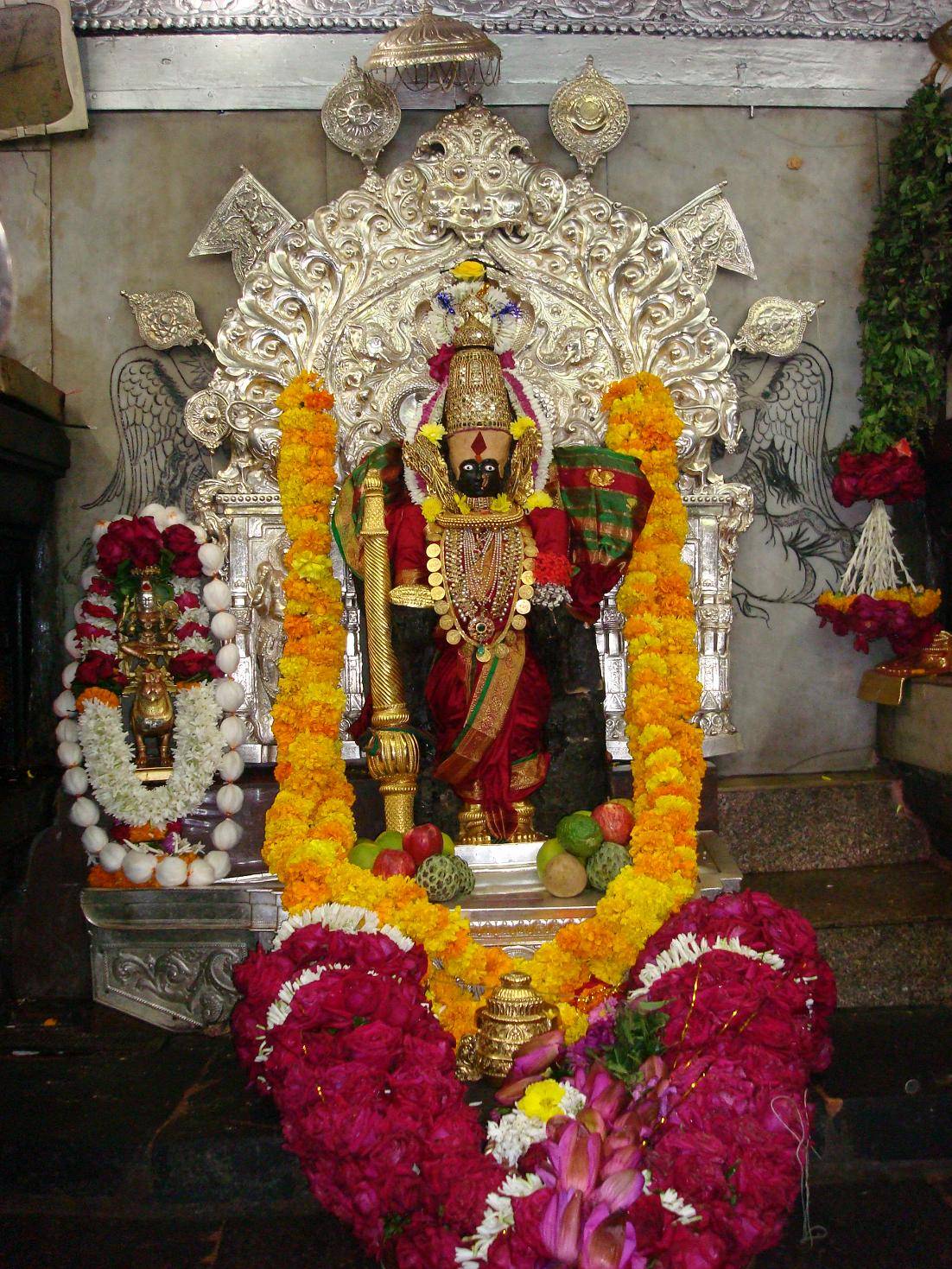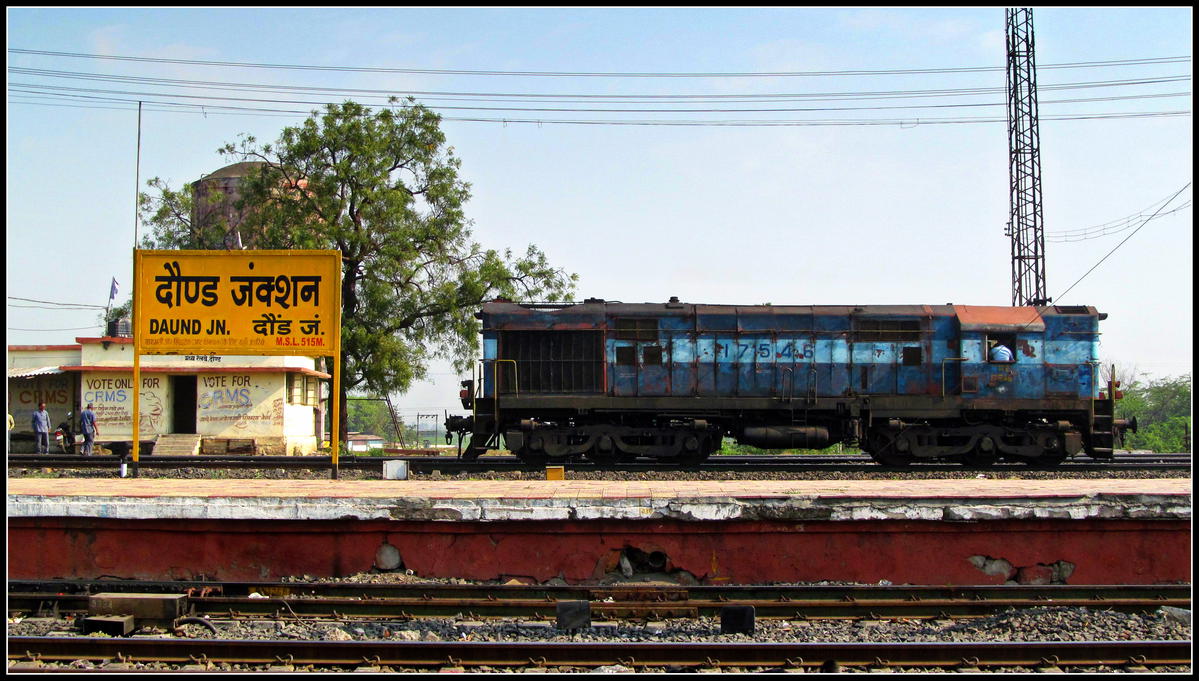|
6th Poona Divisional Area
The 6th Poona Divisional Area was an infantry division of the British Indian Army that formed part of the Indian Army during the First World War. It was formed in October 1914 to replace the original 6th (Poona) Division that had been mobilized in September 1914 for service in Mesopotamia. It was renamed as Poona Division in June 1917 and remained in India throughout the war. The division was redesignated as Poona District in 1920. History At the outbreak of the First World War, the 6th (Poona) Division was mobilized in September 1914 and sailed from Bombay on 16 October for Mesopotamia. The 6th Poona Divisional Area was formed in October 1914 to take over the area responsibilities of the 6th (Poona) Division. It took over the units left behind by the original division and initially only commanded Bombay Brigade, joined by the reformed Poona Brigade in December. However, the Ahmednagar Brigade was not formed until May 1918, followed by the 58th and 59th Indian Brigades i ... [...More Info...] [...Related Items...] OR: [Wikipedia] [Google] [Baidu] |
British Crown
The Crown is the state (polity), state in all its aspects within the jurisprudence of the Commonwealth realms and their subdivisions (such as the Crown Dependencies, British Overseas Territories, overseas territories, Provinces and territories of Canada#Provinces, provinces, or states and territories of Australia, states). Legally ill-defined, the term has different meanings depending on context. It is used to designate the monarch in either a personal capacity, as Head of the Commonwealth, or as the king or queen of their realms (whereas the monarchy of the United Kingdom and the monarchy of Canada, for example, are distinct although they are in personal union). It can also refer to the rule of law; however, in common parlance 'The Crown' refers to the functions of executive (government), government and the civil service. Thus, in the United Kingdom (one of the Commonwealth realms), the government of the United Kingdom can be distinguished from the Crown and the state, in prec ... [...More Info...] [...Related Items...] OR: [Wikipedia] [Google] [Baidu] |
Ahmednagar Brigade
The 6th Poona Divisional Area was an infantry division of the British Indian Army that formed part of the Indian Army during the First World War. It was formed in October 1914 to replace the original 6th (Poona) Division that had been mobilized in September 1914 for service in Mesopotamia. It was renamed as Poona Division in June 1917 and remained in India throughout the war. The division was redesignated as Poona District in 1920. History At the outbreak of the First World War, the 6th (Poona) Division was mobilized in September 1914 and sailed from Bombay on 16 October for Mesopotamia. The 6th Poona Divisional Area was formed in October 1914 to take over the area responsibilities of the 6th (Poona) Division. It took over the units left behind by the original division and initially only commanded Bombay Brigade, joined by the reformed Poona Brigade in December. However, the Ahmednagar Brigade was not formed until May 1918, followed by the 58th and 59th Indian Brigades i ... [...More Info...] [...Related Items...] OR: [Wikipedia] [Google] [Baidu] |
Baroda
Vadodara (), also known as Baroda, is the second largest city in the Indian state of Gujarat. It serves as the administrative headquarters of the Vadodara district and is situated on the banks of the Vishwamitri River, from the state capital of Gandhinagar. The railway line and National Highway 8, which connect Delhi with Mumbai, pass through Vadodara. The city is named for its abundance of the Banyan (''Vad'') tree. Vadodara is also locally referred to as the ''Sanskari Nagari'' () and ''Kala Nagari'' () of India. The city is prominent for landmarks such as the Laxmi Vilas Palace, which served as the residence of the Maratha royal Gaekwad dynasty that ruled over Baroda State. It is also the home of the Maharaja Sayajirao University of Baroda. Etymology The city in one period was called Chandanavati after the rule of Chanda of the Dodiya Rajputs. The capital was also known as Virakshetra or Viravati (Land of Warriors). Later on, it was known as Vadpatraka or Vadodará, an ... [...More Info...] [...Related Items...] OR: [Wikipedia] [Google] [Baidu] |
Ahmedabad
Ahmedabad ( ; Gujarati: Amdavad ) is the most populous city in the Indian state of Gujarat. It is the administrative headquarters of the Ahmedabad district and the seat of the Gujarat High Court. Ahmedabad's population of 5,570,585 (per the 2011 population census) makes it the fifth-most populous city in India, and the encompassing urban agglomeration population estimated at 6,357,693 is the seventh-most populous in India. Ahmedabad is located near the banks of the Sabarmati River, from the capital of Gujarat, Gandhinagar, also known as its twin city. Ahmedabad has emerged as an important economic and industrial hub in India. It is the second-largest producer of cotton in India, due to which it was known as the 'Manchester of India' along with Kanpur. Ahmedabad's stock exchange (before it was shut down in 2018) was the country's second oldest. Cricket is a popular sport in Ahmedabad; a newly built stadium, called Narendra Modi Stadium, at Motera can accommodate 132,0 ... [...More Info...] [...Related Items...] OR: [Wikipedia] [Google] [Baidu] |
Satara (city)
Satara () (ISO: Sātārā) is a city located in the Satara District of Maharashtra state of India, near the confluence of the river Krishna and its tributary, the Venna. The city was established in the 16th century and was the seat of the Chhatrapati of Maratha Empire, Shahu I. It is the headquarters of Satara Tehsil, as well as the Satara District. The city gets its name from the seven forts (Sat-Tara) which are around the city. The city is known as a Soldier's city as well as Pensioner's city. History The first Muslim invasion of the Deccan took place in 1296. In 1636, the Nizam Shahi dynasty came to an end. In 1663, Chattrapati Shivaji conquered Parali and Satara fort. After the death of Shivaji, Shahu Shivaji, heir apparent to the Maratha Empire, captured by Mughals when he was only seven years old, remained their prisoner till the death of his father in 1700. The Dowager Maharani Tarabai proclaimed his younger half-brother, and her son, Shahu Sambhaji as Chhatrapati Mahara ... [...More Info...] [...Related Items...] OR: [Wikipedia] [Google] [Baidu] |
Manmad
Manmad ( ənmaːɖ is one of the towns in Nashik district in the state of Maharashtra in India. It is the third largest city in Nashik district, with a population of approximately 80,000. Geographically it lies within Nandgaon Tehsil in Nashik District. Though it has a larger area and population than most Tehsils in the district, it does not have a Tehsil office. Manmad houses the largest grain storage warehouses of Asia which are administered by Food Corporation of India, and also the offices of petroleum companies like Bharat Petroleum, Hindustan Petroleum and Indian Oil. This is predominantly Railway town. All development in the city took place around railway activity. The city also has a popular Sikh Gurudwara. Manmad is one of the largest markets for onion producing farmers after Lasalgaon; many farmers from nearby villages sell their farm produce in Manmad to wholesale traders, who in turn sell it in Mumbai. The Central Railway Engineering workshop at Manmad, which co ... [...More Info...] [...Related Items...] OR: [Wikipedia] [Google] [Baidu] |
Kholapur
Kolhapur () is a city on the banks of the Panchganga River in the southern part of the Indian state of Maharashtra. It is the administrative headquarter of the Kolhapur district. In, around 2 C.E. Kolapur's name was 'Kuntal'. Kolhapur is known as ''`Dakshin Kashi''' or Kashi of the South because of its spiritual history and the antiquity of its shrine Mahalaxmi, better known as Ambabai. The region is known for the production of the famous hand-crafted and braided leather slippers called Kolhapuri chappal, which received the Geographical Indication designation in 2019. In Hindu mythology, the city is referred to as "''Karvir''." Before India became independent in 1947, Kolhapur was a princely state under the Bhosale Chhatrapati of the Maratha Empire. It is an important center for the Marathi film industry. Etymology Kolhapur is named after Kolhasur, a demon in Hindu History. According to History, the demon Kolhasur renounced asceticism after his sons were killed by God for h ... [...More Info...] [...Related Items...] OR: [Wikipedia] [Google] [Baidu] |
Kirkee
Khadki is a cantonment in the city of Pune, India. It has now flourished as a quasi-metropolis & centered in the northern region of the city. Description Khadki could be considered an Indian Army base, along with an ordnance factory consisting of two ammunition factories, a Military Vehicle Depot (Central Armed Forces Vehicle Depot, CAFVD) and the Military Dairy Farm. Referred to previously as Kirkee during the British Raj, its borders are flanked by two other large army establishments—the College of Military Engineering at Dapodi and the Bombay Engineering Group. It also has a war cemetery (Kirkee War Cemetery) and a war memorial. It has a large market—Khadki Bazaar—and a railway station which was connected to the Ammunition Factory, but which link was shut down in the 1960s. Khadki had a large number of open areas which were converted by CAFVD into playing fields for both Field Hockey and soccer (Football), with as many as four of the former and two of the latter, ther ... [...More Info...] [...Related Items...] OR: [Wikipedia] [Google] [Baidu] |
Daund
Daund is a city, municipal council and headquarters of the Daund tehsil in the Pune district in the state of Maharashtra, India. In ancient times a sage, 'Dhaumya Rishi' used to stay here, hence people started calling this place after him: 'Dhaum'. Gradually 'Dhaum' became 'Dhoand', then 'Dhaundh'. According to the epic Mahabharata, Krishna's wife Rukmini had gone in the 'Dhindir forest', this ancient 'Dhindir Van' is today's Daund. Daund is located on the Bhima river. History Maratha era Shahaji, father of Chhatrapati Shivaji Maharaj, was a sardar in the Nizam Shahi. He had been given Daund as a jagir, including the Bahadurgad fort in Pedgaon (which is still extant on the banks of the Bhima River). Peshwa era In 1739 the Bajirao - Mastani affair had brought clashes among the Peshwa family, hence Bajirao Peshwa took Mastani away from Pune and made her stay in Patas. Hence forth Bajirao and Mastani met at the Firangai Devi temple in Kurkumbh. Water of the rivers Bhima, Nira, ... [...More Info...] [...Related Items...] OR: [Wikipedia] [Google] [Baidu] |
Belgaum
Belgaum (ISO 15919, ISO: ''Bēḷagāma''; also Belgaon and officially known as Belagavi) is a city in the Indian state of Karnataka located in its northern part along the Western Ghats. It is the administrative headquarters of the eponymous Belagavi division and Belagavi district. The Government of Karnataka has proposed making Belagavi the second capital of Karnataka alongside Bangalore, Bengaluru, hence a second state administrative building Suvarna Vidhana Soudha was inaugurated on 11 October 2012. Belagavi has been selected in first phase out of 20 cities, as one of the hundred Indian cities to be developed as a smart city under Narendra Modi, PM Narendra Modi's flagship Smart Cities Mission. History Belgaum was founded in late 12th century AD by the Ratta dynasty, who shifted from nearby Saundatti. A Ratta official named Bichiraja built Kamal Basadi, a Jain temple, dedicated to Neminatha in 1204, which came to be called Kamalabasti. Pillars found inside Belgaum fort ... [...More Info...] [...Related Items...] OR: [Wikipedia] [Google] [Baidu] |
.jpg)
.jpg)





